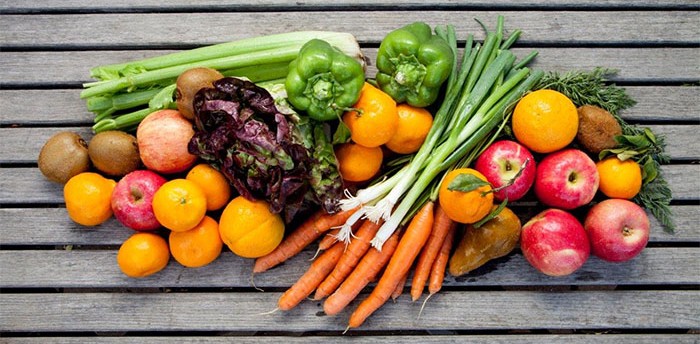Fruits and vegetables are an important part of many food truck menus. Because of this, fresh produce must be handled safely to reduce the risks of delivering foodborne illness to your customers or food truck staff members. As we’ve seen in the past, a California food truck was suspected of giving E. coli to 6 of their customers. The root cause has not been determined. Early investigations show that the truck was serving cilantro from Mexico were E. coli has been found before.
There are a number of steps that food truckers can take to minimize the chances for fruits and vegetables they handle to become contaminated. Best practices for handling all types of produce are described below. We also include practices specific to leafy greens, tomatoes, melons, and sprouts.
Recommendations For Handling Fresh Produce
Contamination of produce with harmful microorganisms can occur at all stages of production, processing, transportation, storage, preparation, and service. To prevent foodborne illness, fresh produce needs to be handled with care at each step from farm to table.
RELATED: 5 Common Food Safety Mistakes You Want Your Food Truck Staff To Avoid
PURCHASING AND RECEIVING
- Use purchasing specs that include food safety requirements, such as maintaining produce at the proper temperature, maintaining clean and pest-free storage areas and delivery vehicles, and complying with federal and state food safety laws and regulations.
- Ensure suppliers are getting fresh produce from licensed, reputable sources.
- Check storage and handling practices of produce suppliers.
- Establish procedures for inspecting and accepting or rejecting incoming deliveries. Procedures should include checking the condition of the fresh produce and the transportation vehicles to make sure specifications are met.
WASHING AND PREPARATION
- Inspect produce for obvious signs of soil or damage prior to cutting, slicing, or dicing. When in doubt about damaged produce, either cut away the affected areas or do not use the item.
- Wash fresh produce before serving or cutting using either:
- Continuous running water.
- Chemical disinfectants, used according to the manufacturer’s label instructions for recommended concentration and contact time. Note: Do not soak produce or store in standing water.
- Do not rewash packaged produce labeled “ready-to-eat,” “washed,” or “triple washed.”
HAND HYGIENE
- Wash all equipment, utensils, and food contact surfaces that come into contact with cut produce, with hot soapy water. Rinse, sanitize, and air-dry before use.
- Wash hands thoroughly with soap and water before handling or cutting fresh produce. Rewash hands after leaving the truck, breaks, sneezing, coughing, handling trash or money, or anytime hands become soiled.
- Use a barrier such as gloves, deli paper, or an appropriate utensil to touch ready-to-eat produce.
- Always wash hands before putting on disposable gloves.
- Change disposable gloves anytime the gloves may have been contaminated or when changing tasks.
- Do not wash or reuse disposable gloves.
- Change disposable gloves if they are torn or damaged.
SERVING
- Do not store produce in direct contact with ice or water while on serving lines.
- Mark the time when cut produce is displayed without refrigeration. Display cut fresh produce for a maximum of 4 hours if not in a refrigeration unit or containers surrounded by ice. Discard any uneaten produce at the end of 4 hours.
- Change utensils periodically.
- Set up the service line as close to mealtime as possible to reduce the time that produce sits out.
- Keep cold foods at or below 41°F in a refrigeration unit or surrounded by ice.
- Monitor and document the internal temperature of items every 30 minutes.
- Clean up spills promptly. Wiping cloths should be stored in sanitizing solution and laundered daily.
STORAGE
- Maintain produce at the temperature recommended for the variety and particular stage of ripeness.
- Store produce at least 6 inches off the floor, including in refrigerators.
- Store fresh produce in a covered container and above other items that might cause contamination.
- Wash produce just before preparation, not before storage.
TRAINING AND GENERAL FOOD SAFETY PRACTICES
- Develop training programs to teach the importance of food safety and proper handling of fresh produce to all food truck employees.
- Practice good food safety and food handling techniques to prevent cross-contamination.
RELATED: Marketing Your Food Truck By Using Local Produce
Find additional food safety tips from FoodSafety.gov




